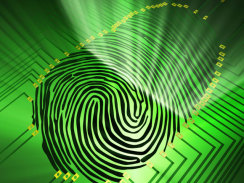March 14th, 2011 by GarySchwitzer in News, Research
No Comments »

Here we go again. Headlines across America blaring lines like, “Coffee may reduce stroke risk.”
It was a big study, but an observational study. Not a trial. Not an experiment. And, as we say so many times on this website that you could almost join along with the chorus, observational studies have inherent limitations that should always be mentioned in stories. They can’t prove cause and effect. They can show a strong statistical association, but they can’t prove cause and effect. So you can’t prove benefit or risk reduction. And stories should say that.
USA Today, for example, did not explain that in its story. Nor did it include any of the limitations that were included in, for example, a HealthDay story, which stated:
“The problem with this type of study is that there are too many factors unaccounted for and association does not prove causality, said Dr. Larry B. Goldstein, director of the Duke Stroke Center at Duke University Medical Center.
“Subjects were asked about their past coffee consumption in a questionnaire and then followed over time. There is no way to know if they changed their behavior,” Goldstein said.
And, he noted, there was no control for medication use or other potential but unmeasured factors.
“The study is restricted to a Scandinavian population, and it is not clear, even if there is a relationship, that it would be present in more diverse populations. I think that it can be concluded, at least in this population, that there was not an increased risk of stroke among coffee drinkers,” he said.”
When you don’t explain the limitations of observational studies — and/or when you imply that cause and effect has been established — you lose credibility with some readers. And you should. Read more »
*This blog post was originally published at Gary Schwitzer's HealthNewsReview Blog*
March 2nd, 2011 by Jon LaPook, M.D. in News, Research, Video
2 Comments »
A new study finds that half of men in America are infected with the HPV virus. Dr. Jon LaPook reports on the growing concern that the virus in men could be responsible for an increase in head and neck cancers.
HPV Affects Half Of U.S. Men
A study out [yesterday] in The Lancet by Moffitt Cancer Center researcher Anna Giuliano, Ph.D., and her colleagues finds that 50 percent of men ages 18 to 70 in Brazil, Mexico, and the U.S. have genital infection with human papillomavirus (HPV). HPV is the virus that causes cervical cancer in women. It also causes warts and cancer of the genitals and anus in both men and women. Over the past several years, researchers have realized that the virus can also cause cancer of the head and neck.
Aimee R. Kreimer, Ph.D., of the National Cancer Institute, estimates that about 65 percent of the approximately 8,000 cancers of the tonsils and base of the tongue (oropharynx) seen in the U.S. in 2010 were from HPV infection; eighty percent of these are in men. The rates for HPV-associated cancers like these are increasing; for sites like the mouth and larynx that are associated with tobacco and alcohol use, the rates are decreasing (though still too high since too many people still smoke and abuse alcohol).
An infection rate of 50 percent for a virus that can cause cancer sounds scary. But knowing a few more facts about HPV helps put the risk in perspective. About 90 percent of men and women infected with HPV virus get rid of it on their own within about two years. There are many different strains of HPV — some that cause cancer and some that don’t. Only about 6 percent of men have genital infection with HPV 16 — the strain linked to more than 90 percent of cancers of the head and neck. And only about 0.6 percent of men have HPV 16 in specimens taken from their mouths; what percentage of those men go on to develop head and neck cancer is unknown. Read more »
January 15th, 2011 by DrWes in Health Policy, Opinion
No Comments »

 From CBS News:
From CBS News:
President Obama is planning to hand the U.S. Commerce Department authority over a forthcoming cybersecurity effort to create an Internet ID for Americans, a White House official said here today.
It’s “the absolute perfect spot in the U.S. government” to centralize efforts toward creating an “identity ecosystem” for the Internet, White House Cybersecurity Coordinator Howard Schmidt said.
That news, first reported by CNET, effectively pushes the department to the forefront of the issue, beating out other potential candidates including the National Security Agency and the Department of Homeland Security. The move also is likely to please privacy and civil liberties groups that have raised concerns in the past over the dual roles of police and intelligence agencies.
No, they’re not talking about a national ID card, just an international internet ID. The announcement came at an event today at the Stanford Institute for Economic Policy Research, where U.S. Commerce Secretary Gary Locke and Schmidt spoke. The Obama administration is currently drafting what it’s calling the National Strategy for Trusted Identities in Cyberspace, which Locke said will be released by the president in the next few months. (An early version was publicly released last summer.)
“We are not talking about a national ID card,” Locke said at the Stanford event. “We are not talking about a government-controlled system. What we are talking about is enhancing online security and privacy and reducing and perhaps even eliminating the need to memorize a dozen passwords, through creation and use of more trusted digital identities.”
Imagine: Anyone registered with such a cyber-ID who conferences with their doctor via a “secure server” can also be tracked by the government with such a mechanism. And the issue of not needing more than one password? While convenient, the ramifications of multiple accounts being compromised if a data leak were to occur remains with such a mechanism. Read more »
*This blog post was originally published at Dr. Wes*
June 15th, 2010 by GarySchwitzer in Better Health Network, Health Policy, News, Opinion, Research
1 Comment »

 This week the FDA will vote on flibanserin, the much-talked-about drug for women with the condition called hypoactive sexual desire disorder or — because everything in sexual health needs an acronym like ED or PE — HSDD.
This week the FDA will vote on flibanserin, the much-talked-about drug for women with the condition called hypoactive sexual desire disorder or — because everything in sexual health needs an acronym like ED or PE — HSDD.
On the eve of the FDA vote, CBS last week ran still another story about flibanserin. This drug has received so much news coverage, you’d think it cures cancer.
And CBS did little more than promote the hype even more, saying FDA approval “could translate into a $2 billion market in this country alone” and then failing to challenge the disease-mongering estimate of “10 percent to 30 percent of women” with this condition. It all just goes along with the drug company’s efforts to build a demand before the drug is even approved. Read more »
*This blog post was originally published at Gary Schwitzer's HealthNewsReview Blog*
May 29th, 2010 by Gwenn Schurgin O'Keeffe, M.D. in Better Health Network, Health Tips, Opinion, True Stories
No Comments »

 It’s here again: High school graduation season — that annual rite of passage for high schoolers coast to coast to embark upon that much-anticipated journey from home to that first true independent step outside the safety net of their childhood communities.
It’s here again: High school graduation season — that annual rite of passage for high schoolers coast to coast to embark upon that much-anticipated journey from home to that first true independent step outside the safety net of their childhood communities.
What always amazes me is the pressure high school kids feel as they embark upon this journey and how often I hear these kids express anxiety over not knowing what they want to be “when they grow up.” And, let’s not forget that we are still talking about kids — these are still teenagers, still developing and maturing. Read more »
*This blog post was originally published at Dr. Gwenn Is In*





 This week the FDA will vote on flibanserin, the much-talked-about drug for women with the condition called hypoactive sexual desire disorder or — because everything in sexual health needs an acronym like ED or PE — HSDD.
This week the FDA will vote on flibanserin, the much-talked-about drug for women with the condition called hypoactive sexual desire disorder or — because everything in sexual health needs an acronym like ED or PE — HSDD.
 It’s here again: High school graduation season — that annual rite of passage for high schoolers coast to coast to embark upon that much-anticipated journey from home to that first true independent step outside the safety net of their childhood communities.
It’s here again: High school graduation season — that annual rite of passage for high schoolers coast to coast to embark upon that much-anticipated journey from home to that first true independent step outside the safety net of their childhood communities.







